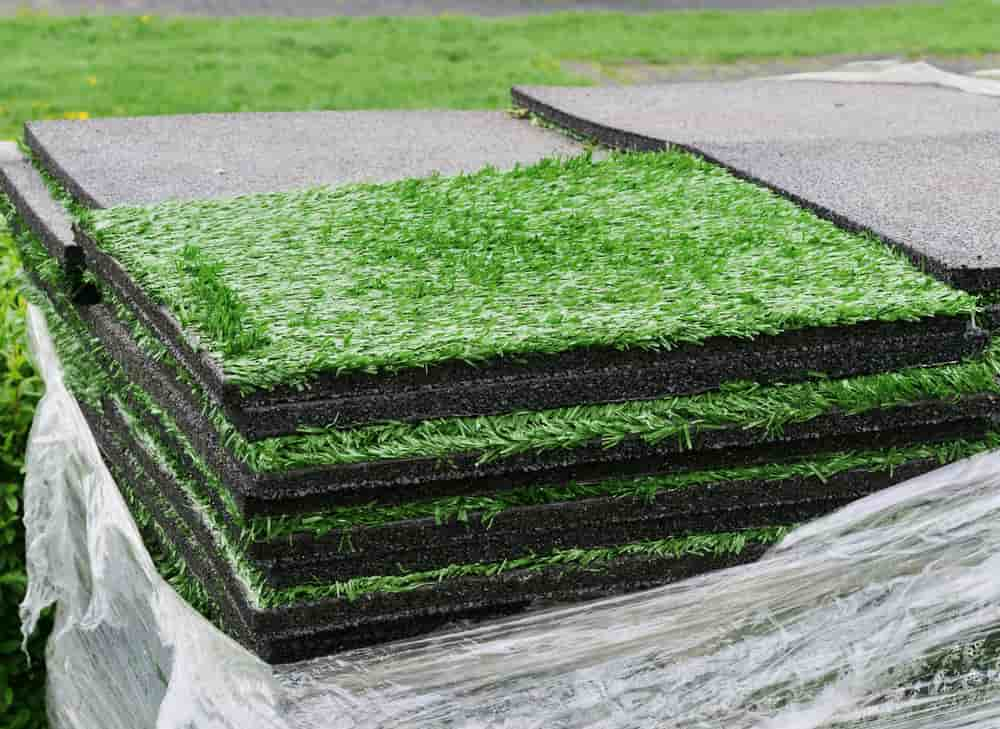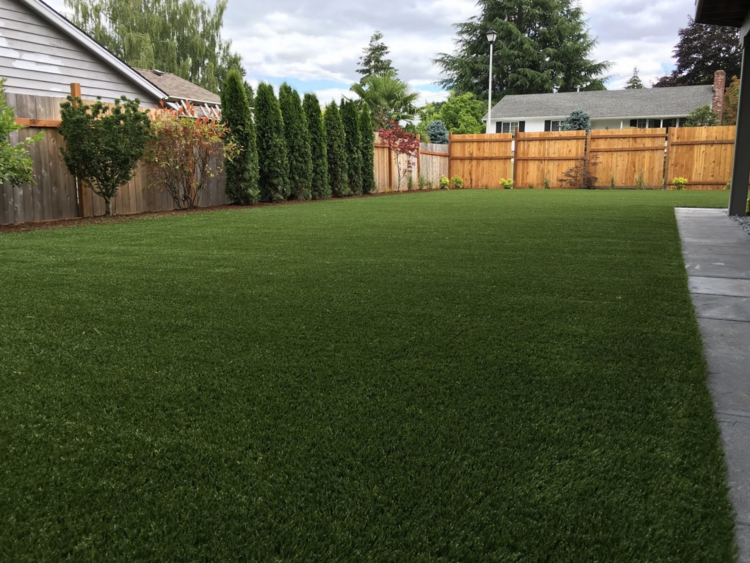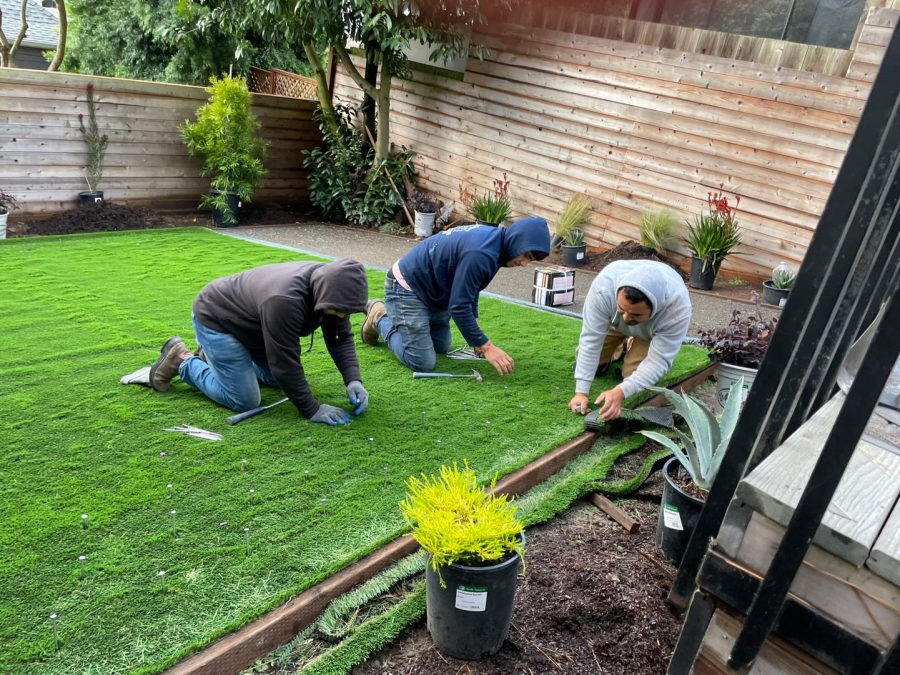Look Into the Environmental Conveniences of Opting for Synthetic Grass Solutions
The adoption of artificial turf options provides a compelling opportunity to deal with pushing ecological challenges. By dramatically decreasing water use and lessening the application of harmful chemicals, these choices not just promote sustainable landscape design however likewise secure regional ecosystems.
Water Conservation Perks
One of the most substantial benefits of fabricated grass is its capability to save water. In comparison, man-made lawn does not require watering, substantially lowering the overall need for water resources.
By getting rid of the demand for normal watering, synthetic turf adds to lasting landscape techniques and helps minimize the environmental impact of too much water usage. Moreover, the conservation of water extends to the reduction of drainage, which can bring about dirt erosion and river contamination.
In addition, the installation of man-made grass permits homeowners and towns to designate water sources extra effectively, concentrating on important uses such as drinking water and farming. The shift in the direction of artificial grass not just promotes responsible water use however also lines up with wider environmental goals focused on preserving natural sources.
As neighborhoods progressively prioritize sustainability, the water preservation benefits of synthetic turf offer a compelling case for its fostering in business and property landscape design tasks.
Decreased Chemical Use
The change to synthetic grass significantly decreases the reliance on chemical therapies commonly used in natural grass upkeep. Typical lawn monitoring generally includes the application of herbicides, plant foods, and pesticides to promote development and control bugs. These chemicals can present risks to human health, local wildlife, and the environment, adding to dirt and water contamination.
In comparison, synthetic lawn gets rid of the requirement for these damaging substances. By lessening the release of synthetic substances into the ecological community, synthetic lawn advertises healthier soil and water systems.
In addition, the absence of chemical overflow connected with synthetic grass installations assists secure local waterways from air pollution, supporting aquatic life and maintaining biodiversity. Arizona artificial turf. As communities progressively focus on lasting methods, going with synthetic grass presents a feasible remedy that aligns with environmental preservation goals. Through this shift, residential or commercial property owners can appreciate lush eco-friendly areas without jeopardizing eco-friendly health, paving the method for a much more sustainable future
Reduced Carbon Impact

Furthermore, the installment of synthetic grass can result in significant water conservation. All-natural grass need significant amounts of water for irrigation, which not just includes in the carbon impact related to water removal and therapy but also pressures local water resources. On the other description hand, synthetic grass requires very little maintenance, calling for no watering, thereby considerably lowering water usage and its associated energy costs.
Additionally, the durability of fabricated lawn adds to its decreased carbon effect. With a life expectancy of approximately 15 years or even more, the requirement for regular replacements is decreased, causing less waste and lower energy intake in manufacturing and dealing with conventional turf alternatives. On the whole, fabricated turf offers a lasting choice for environmentally conscious landscape design.
Habitat Preservation
Environment preservation is an essential factor to consider in the argument over landscaping selections, especially when comparing man-made lawn to all-natural grass. Natural grass lawns frequently require substantial maintenance, consisting of the usage of herbicides, pesticides, and plant foods, which can detrimentally affect neighborhood ecological communities. These chemicals can leach into the dirt and rivers, hurting indigenous plants and fauna and disrupting regional environments.
In contrast, man-made turf offers an opportunity to minimize the ecological impact of landscaping. By going with artificial turf, homeowners can lessen the disruption of all-natural environments connected with standard grass treatment techniques. Synthetic grass removes the need for hazardous chemicals, consequently securing neighboring wildlife and maintaining the stability of bordering ecosystems. Additionally, the installment of man-made turf can result in the conversion of previous yard locations into more biodiverse landscapes, such as pollinator yards or indigenous plant locations, which can sustain local wildlife.
Inevitably, the change to fabricated lawn not just saves water and decreases upkeep efforts but also cultivates an extra harmonious relationship in between human tasks and the native environment, advertising habitat preservation at the same time.
Long-Term Sustainability
Lasting sustainability is a critical factor in examining the advantages of synthetic grass over typical turf lawns. Among the most significant advantages of artificial lawn is its longevity; it can last as much as 15-20 years with minimal upkeep, whereas all-natural lawn requires frequent reseeding and substitute. This longevity decreases the demand for consistent resources, such as water, plant foods, and pesticides, which are vital for maintaining a healthy and balanced turf yard.
Furthermore, synthetic grass adds to a decrease in carbon discharges linked with yard care tools. Conventional grass frequently call for gas-powered mowers, trimmers, and blowers, all of which add to air pollution. Artificial turf companies phoenix. In comparison, synthetic grass gets rid of the need for such equipment, promoting a cleaner setting
Furthermore, the manufacturing of synthetic turf progressively makes use of recycled materials, improving its sustainability account. As producers take on environmentally friendly methods, the ecological footprint of synthetic grass continues to reduce.

Verdict
The adoption of synthetic grass services provides substantial environmental advantages, consisting of considerable water conservation, reduced dependence on hazardous chemicals, and a reduced carbon footprint. Man-made lawn aids in maintaining all-natural environments by lessening land disturbance and advertising lasting sustainability with the usage of More Help durable materials. Jointly, these factors highlight the possibility of man-made turf to contribute favorably to environmental health and wellness and supply a sensible option to typical landscaping methods in a significantly resource-conscious world.
In comparison, synthetic lawn does not require watering, considerably minimizing the total demand for water sources. By decreasing the launch of synthetic compounds into the ecological community, synthetic grass promotes much healthier dirt and water systems.
Furthermore, the setup of fabricated lawn can result in substantial water conservation. In comparison, artificial turf needs minimal maintenance, requiring no watering, consequently dramatically reducing water usage and its associated energy prices.

Comments on “Top-Rated Phoenix Turf Companies Providing Synthetic Grass Solutions”